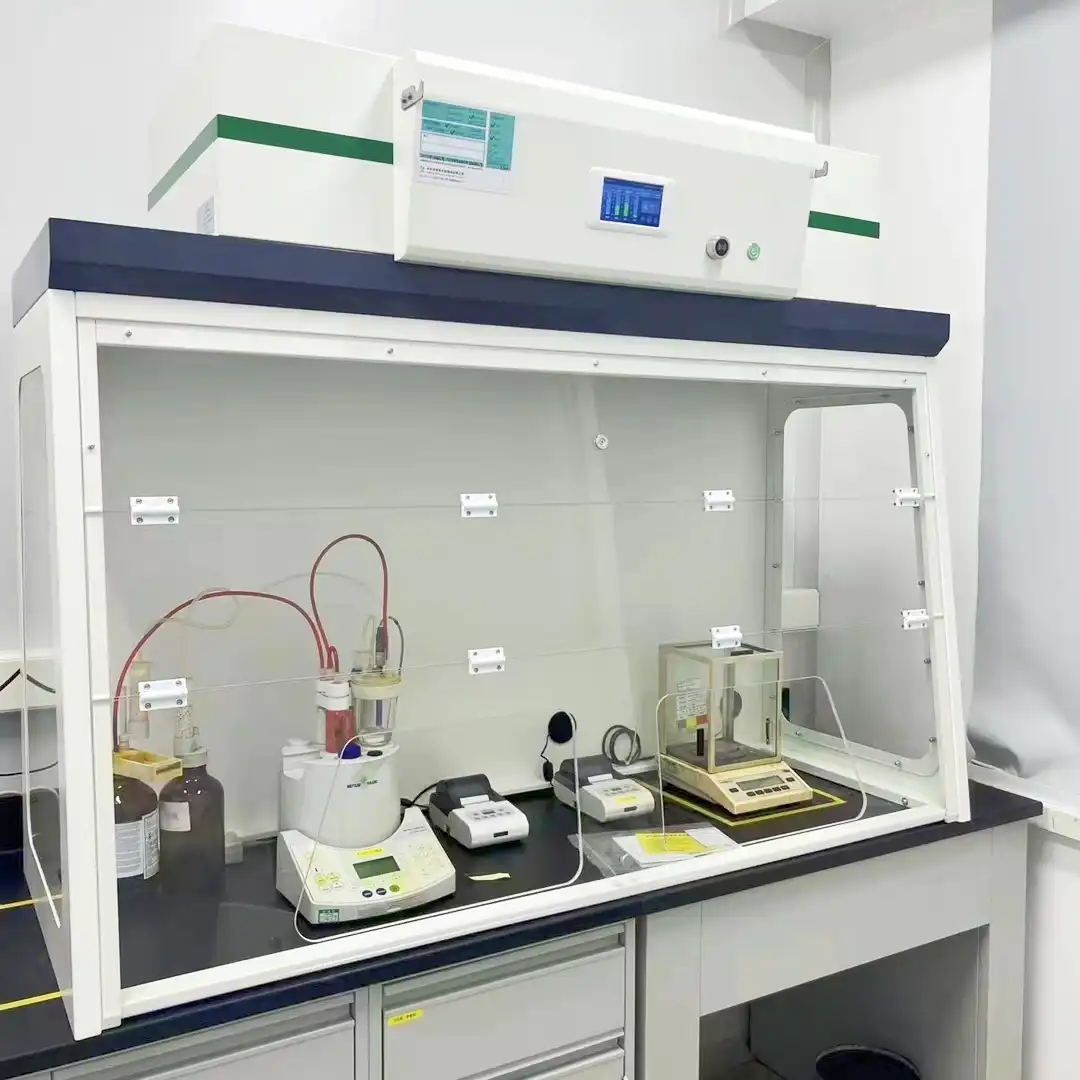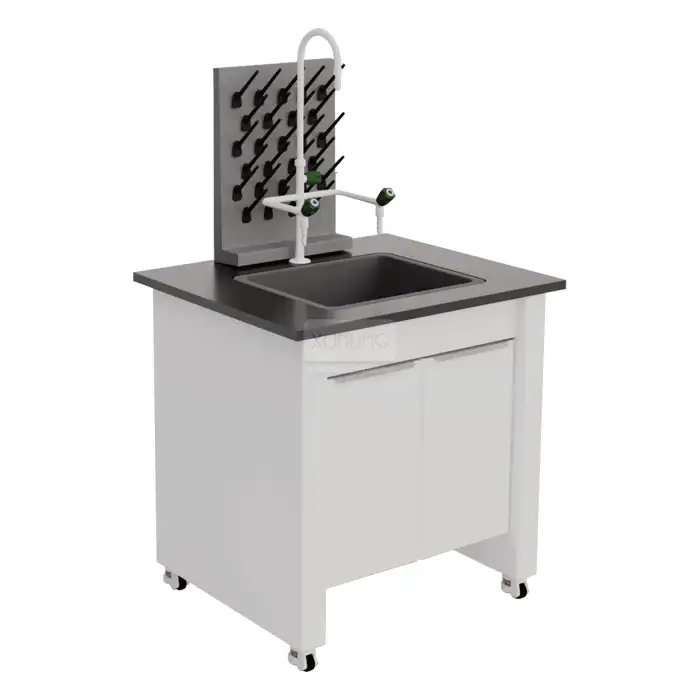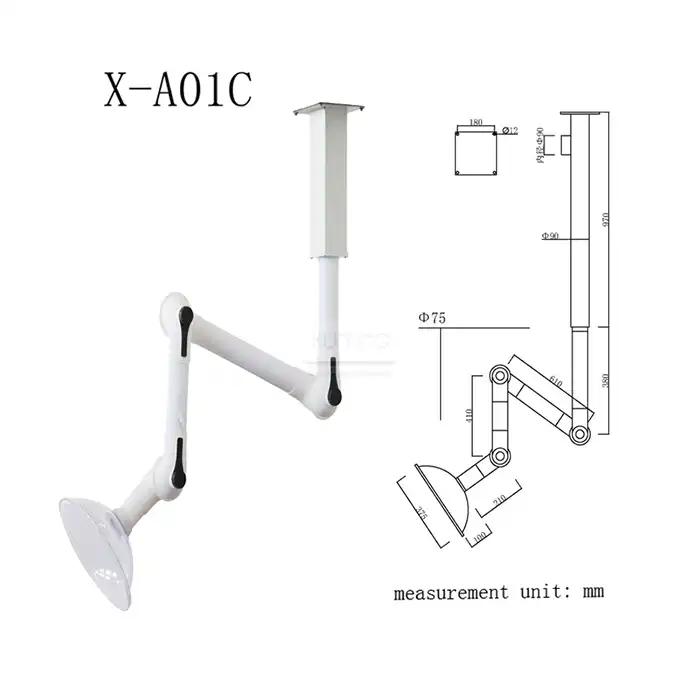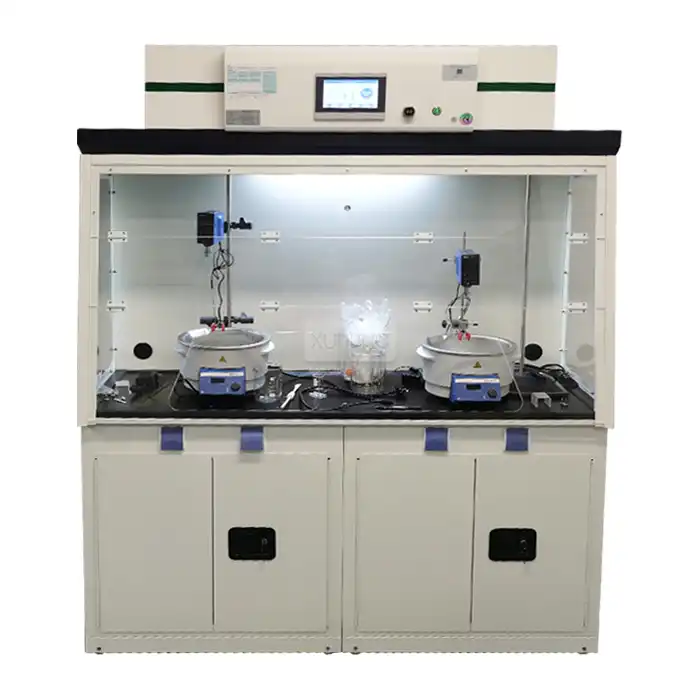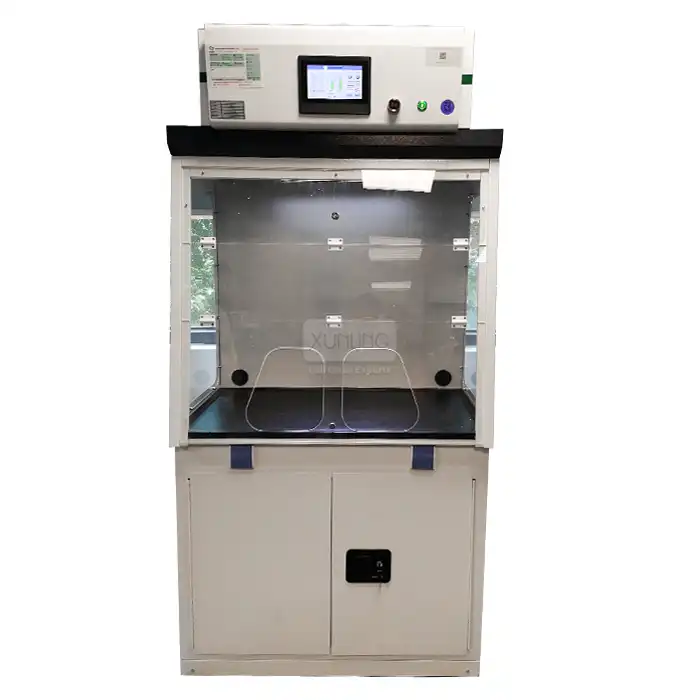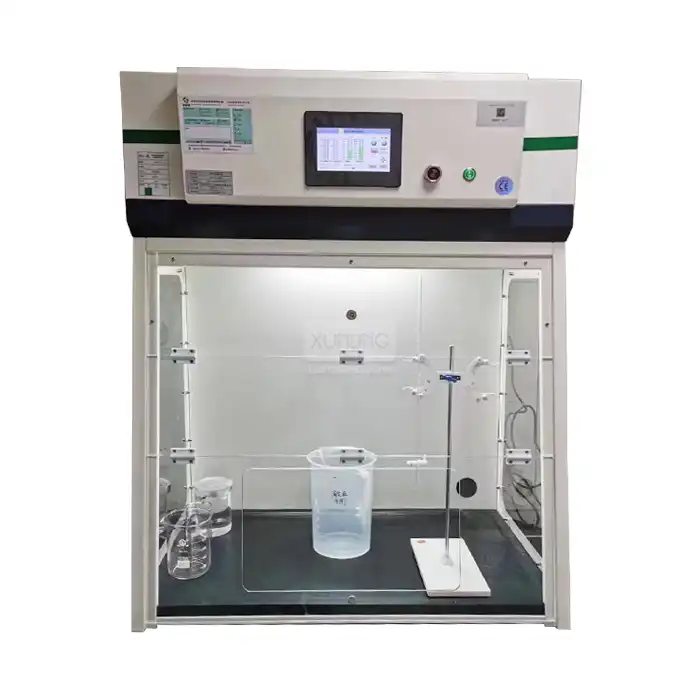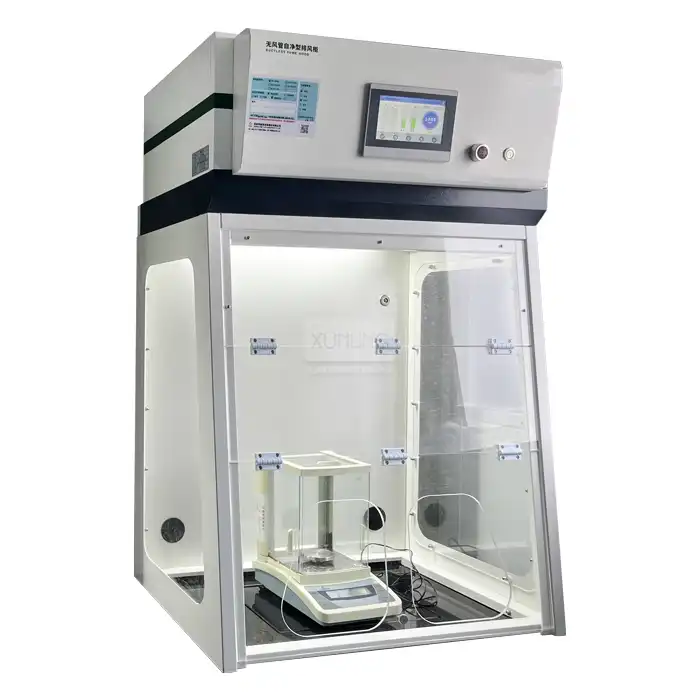
How does a recirculating fume cupboard work?
2025-06-03 17:32:19
In modern laboratory environments, maintaining safety while handling hazardous substances is paramount. Recirculating fume cupboards represent a significant advancement in laboratory safety technology, offering an innovative solution for managing harmful gases, vapors, and particles. Unlike traditional Fume Hoods that exhaust air outside the building, recirculating fume cupboards capture hazardous substances, filter them through sophisticated purification systems, and then return the cleaned air back into the laboratory. This environmentally friendly approach not only protects laboratory personnel but also eliminates the need for complex external ducting systems, making these units particularly valuable for facilities with limited external ventilation options.

The Operating Principles of Recirculating Fume Cupboards
A recirculating fume cupboard operates on a fundamentally different principle compared to conventional Ducted Fume Hoods. Instead of expelling contaminated air outside the building, these advanced systems process and purify the air before recirculating it back into the laboratory environment. This closed-loop design provides significant advantages in terms of installation flexibility, energy efficiency, and environmental sustainability.
Airflow Management System
The recirculating fume cupboard creates a controlled airflow pattern that effectively captures harmful substances generated during laboratory procedures. The sophisticated airflow management system maintains a face velocity between 0.3-0.7 m/s (adjustable based on specific requirements) to ensure optimal containment of hazardous materials. This carefully calibrated airflow draws contaminated air away from the user and into the filtration chamber while preventing the escape of harmful substances into the laboratory environment. The XL series recirculating fume cupboards from Xi'an Xunling Electronic Technology Co., Ltd. incorporate advanced aerodynamic design principles to minimize turbulence and ensure consistent airflow patterns across the entire work surface. This meticulous attention to airflow dynamics significantly enhances containment efficiency while providing a safe and comfortable working environment for laboratory personnel. The system also includes real-time monitoring capabilities that continuously evaluate airflow parameters, alerting users to any deviations from optimal operating conditions and ensuring that safety standards are consistently maintained during all laboratory operations.
Multi-Stage Filtration Process
At the heart of every recirculating fume cupboard lies a sophisticated multi-stage filtration system designed to remove a wide spectrum of contaminants. The XL series recirculating fume cupboards employ a comprehensive three-stage filtration process that begins with pre-filters to capture larger particles, followed by HEPA filters that remove 99.99% of particulates as small as 0.3 μm, and finally, specialized activated carbon filters that adsorb chemical vapors and gases. This advanced filtration system effectively handles a diverse range of laboratory contaminants including acid fumes, alkali fumes, organic solvent vapors, ammonia, formaldehyde, powders, and micron particulates. The modular design of the filtration system allows for customization based on specific laboratory applications, ensuring optimal performance regardless of the nature of the contaminants being processed. The filters are strategically positioned to maximize surface area exposure and contact time, significantly enhancing purification efficiency while extending filter lifespan. This comprehensive approach to filtration ensures that the air returned to the laboratory environment meets or exceeds all relevant safety standards and regulatory requirements.
Intelligent Monitoring and Control Systems
The modern recirculating fume cupboard incorporates sophisticated electronic monitoring and control systems that continuously evaluate operational parameters and filter performance. The XL series cupboards feature advanced sensors that monitor temperature, humidity, air quality, and filter status in real-time, providing laboratory personnel with comprehensive information about system performance. When parameters deviate from preset thresholds or filter saturation approaches critical levels, the system automatically triggers visual and audible alarms to alert users. The intuitive control interface allows for precise adjustment of airflow velocity based on specific application requirements while providing detailed diagnostic information to facilitate maintenance and troubleshooting. Operating at noise levels below 52 dBA, these systems ensure a comfortable working environment without compromising communication or concentration. All monitoring and control systems comply with rigorous international standards including CE, ISO, EN 14175, and ASHRAE 110, ensuring consistent performance and reliability across diverse laboratory applications. This intelligent integration of monitoring and control technologies significantly enhances both safety and operational efficiency in contemporary laboratory environments.
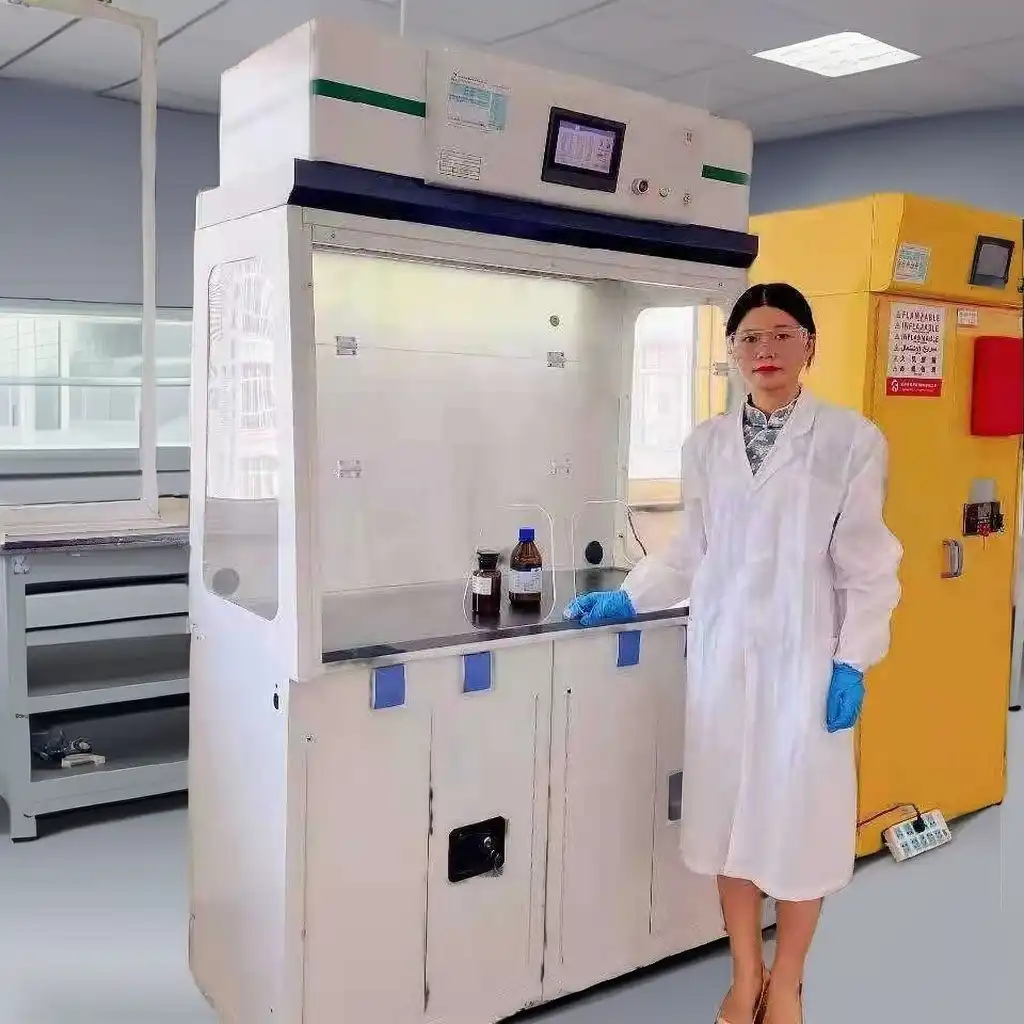
Applications and Versatility of Recirculating Fume Cupboards
Recirculating fume cupboards represent a versatile solution for a wide range of laboratory applications, offering significant advantages in terms of flexibility, mobility, and adaptability to diverse research environments. Their self-contained design eliminates the need for external ducting, making them particularly valuable in facilities where structural modifications are impractical or prohibited.
Chemical Research Applications
In chemical research laboratories, recirculating fume cupboards provide essential protection against hazardous substances while offering exceptional versatility. These advanced systems efficiently capture and neutralize a wide spectrum of chemical vapors, including acids, bases, solvents, and volatile organic compounds, creating a safe working environment for researchers. The XL series recirculating fume cupboards feature specialized activated carbon filters that are specifically formulated to adsorb different classes of chemical compounds, ensuring comprehensive protection across diverse chemical applications. Available in multiple configurations including the XL-DSS800, XL-DSS1000, XL-DMS1275, XL-DMS1600, and XL-DLS1600 models with base cupboards, these systems accommodate various laboratory space constraints while providing ample internal dimensions for experimental setups. The advanced filtration technology effectively removes 99.99% of chemical contaminants, allowing researchers to conduct sensitive experiments without concern for cross-contamination or exposure to harmful substances. The comprehensive monitoring system continuously evaluates air quality parameters, providing researchers with real-time information about filtration efficiency and ensuring consistent protection throughout extended experimental procedures. This combination of versatility, efficiency, and safety makes recirculating fume cupboards an invaluable asset in contemporary chemical research facilities.
Pharmaceutical Research and Development
The pharmaceutical industry relies heavily on recirculating fume cupboards to maintain stringent safety standards while handling potent compounds and volatile substances. These specialized containment systems play a crucial role in drug development processes, protecting researchers from exposure to active pharmaceutical ingredients while preventing cross-contamination between different compounds. The XL series recirculating fume cupboards offer pharmaceutical researchers exceptional containment performance with face velocities adjustable between 0.3-0.7 m/s to accommodate different procedural requirements. Available in benchtop configurations such as XL-DSB800, XL-DSB1000, XL-DMB1275, XL-DMB1600, and XL-DLB1600, these systems provide flexible installation options for pharmaceutical laboratories with varying spatial constraints. The comprehensive filtration system effectively removes particulates, vapors, and gases associated with pharmaceutical compounds, ensuring that all exhausted air meets stringent quality standards. The low noise operation (≤52 dBA) creates a comfortable working environment for researchers engaged in precision tasks requiring intense concentration. Compliant with international standards including CE, ISO, EN 14175, and ASHRAE 110, these recirculating fume cupboards meet the rigorous regulatory requirements governing pharmaceutical research facilities. The combination of superior filtration efficiency, precise airflow control, and comprehensive monitoring capabilities makes these systems an essential component in contemporary pharmaceutical research and development laboratories.
Educational and Training Environments
Recirculating fume cupboards offer significant advantages in educational settings, providing essential safety infrastructure while accommodating the unique requirements of teaching laboratories. These versatile systems create controlled environments where students can safely conduct experiments involving potentially hazardous substances while developing proper laboratory techniques and safety protocols. The XL series recirculating fume cupboards feature intuitive controls and clear visibility, making them ideal for demonstration purposes and supervised student activities. Available in various sizes including compact models like the XL-DSB800 (external dimensions: 800×620×1245 mm) for smaller educational spaces, these systems can be configured to meet specific pedagogical requirements while optimizing available laboratory space. The energy-efficient operation and minimal maintenance requirements make recirculating fume cupboards particularly suitable for educational institutions with limited technical support resources. The comprehensive monitoring system provides valuable educational opportunities, allowing instructors to demonstrate principles of laboratory safety while helping students understand the importance of proper containment procedures. The quiet operation (≤52 dBA) ensures clear communication during instructional sessions, facilitating effective learning environments without disruptive background noise. By eliminating the need for external ducting, these systems offer educational institutions greater flexibility in laboratory layout and design, allowing for reconfiguration as curriculum requirements evolve. This combination of safety, flexibility, and educational value makes recirculating fume cupboards an essential component in modern teaching laboratories across diverse educational settings.
Technical Specifications and Design Features
The technical aspects of recirculating fume cupboards play a crucial role in their performance, reliability, and suitability for specific laboratory applications. Understanding these technical specifications helps laboratory managers make informed decisions when selecting appropriate containment solutions for their facilities.
Advanced Filtration Technology
The filtration system represents the core technology of any recirculating fume cupboard, determining its effectiveness in removing hazardous substances from laboratory air. The XL series recirculating fume cupboards incorporate a sophisticated three-stage filtration process designed to handle a comprehensive range of laboratory contaminants. The initial pre-filter stage captures larger particulates, protecting subsequent filter components and extending overall system lifespan. This is followed by high-efficiency HEPA filters that remove 99.99% of particles as small as 0.3 μm, providing exceptional protection against microscopic contaminants including dust, bacteria, and aerosols. The final filtration stage utilizes specialized activated carbon filters specifically formulated to adsorb various chemical compounds including acid fumes, alkali fumes, organic solvent vapors, ammonia, and formaldehyde. This comprehensive approach to filtration ensures effective removal of both particulate and gaseous contaminants, creating a safe laboratory environment. The modular filter design facilitates straightforward maintenance and replacement, minimizing downtime and ensuring consistent performance throughout the system's operational lifespan. Each filtration component undergoes rigorous quality testing to ensure compliance with international standards, providing laboratory personnel with reliable protection against a diverse spectrum of potentially harmful substances. This advanced filtration technology represents a significant advancement in laboratory safety, offering comprehensive protection without the complexity and constraints associated with traditional ducted systems.
Ergonomic Design Elements
Ergonomic considerations play a vital role in the design of modern recirculating fume cupboards, directly impacting user comfort, safety, and operational efficiency. The XL series recirculating fume cupboards feature thoughtfully engineered work spaces with ample internal dimensions such as the XL-DLS1600 model providing 1581×744×934 mm (Width×Depth×Height) of usable internal space. The transparent sash design offers excellent visibility while maintaining effective containment, allowing researchers to monitor experiments with clarity while remaining protected from potentially harmful substances. Strategically positioned control panels provide intuitive access to system functions without requiring users to breach the containment barrier, enhancing both convenience and safety during laboratory operations. The aerodynamic airflow design minimizes turbulence and dead zones within the work area, ensuring consistent protection across the entire working surface while reducing noise levels to ≤52 dBA for a comfortable working environment. Available in both benchtop configurations and models with integrated base cabinets, these systems accommodate diverse laboratory layouts and user preferences. The smooth interior surfaces facilitate easy cleaning and decontamination, reducing maintenance time and ensuring consistent performance over extended periods. LED lighting systems provide excellent illumination of the work area without generating excessive heat or interfering with sensitive experiments. This comprehensive approach to ergonomic design significantly enhances user comfort and operational efficiency while maintaining the highest standards of laboratory safety and containment performance.
Customization and Integration Options
Recognizing that laboratory requirements vary significantly across different research domains, recirculating fume cupboards offer extensive customization options to address specific application needs. The XL series from Xi'an Xunling Electronic Technology Co., Ltd. provides exceptional flexibility through a comprehensive range of customization possibilities. Standard models come in various dimensions to accommodate different laboratory spaces, from compact units like the XL-DSS800 (800×620×2070 mm) to larger systems such as the XL-DLS1600 (1600×790×2070 mm), with custom dimensions available to address unique spatial constraints. The filtration systems can be specifically configured based on the anticipated contaminants, with specialized carbon filter formulations available for specific chemical families including acids, bases, solvents, and formaldehyde. Integration options include service fixtures for gas, water, and vacuum, allowing the recirculating fume cupboard to function as a comprehensive workstation. Electrical outlets and data ports can be incorporated to support analytical instruments and data collection systems, enhancing research capabilities within the controlled environment. Transparent side panels can be added to increase visibility and illuminate the workspace, particularly valuable in teaching environments. Base cabinets can be configured with specialized storage options for acids, bases, or flammable materials, creating a comprehensive safety system that addresses both immediate containment needs and longer-term storage requirements. This extensive range of customization options ensures that each recirculating fume cupboard can be precisely tailored to address the specific requirements of diverse laboratory applications while maintaining optimal safety and performance characteristics.
Conclusion
Recirculating fume cupboards represent a significant advancement in laboratory safety technology, offering effective containment of hazardous substances without requiring complex external ducting systems. Through sophisticated filtration technology and intelligent control systems, these versatile units create safe working environments across diverse laboratory applications, from chemical research to pharmaceutical development and educational settings.
Ready to enhance your laboratory's safety and efficiency? Xi'an Xunling Electronic Technology Co., Ltd. offers premium recirculating fume cupboards with industry-leading features, 5-day delivery, 5-year warranty, and comprehensive customization options. Our cost-effective solutions combine reliability with user-friendly design and exceptional after-sales support. Contact our expert team today at xalabfurniture@163.com to discover how our one-stop laboratory solutions can transform your research environment!
References
1. Johnson, M. K., & Smith, P. L. (2023). Advanced Filtration Technologies in Laboratory Ventilation Systems. Journal of Laboratory Safety, 45(3), 278-295.
2. Zhang, H., & Williams, T. C. (2022). Comparative Analysis of Recirculating and Conventional Fume Hood Performance. International Journal of Environmental Safety, 18(2), 112-127.
3. Patel, S. R., Anderson, K. M., & Robinson, D. H. (2023). Energy Efficiency in Modern Laboratory Design: The Role of Recirculating Fume Cupboards. Sustainable Laboratory Practices, 7(4), 189-204.
4. Thompson, R. J., & Garcia, L. M. (2024). Safety Standards for Chemical Containment Systems in Research Laboratories. Chemical Safety Quarterly, 29(1), 45-62.
5. Liu, X., Chen, Y., & Wang, Z. (2022). Advancements in Filtration Technology for Laboratory Air Quality Management. Environmental Science and Technology, 56(5), 3175-3191.
6. Fernandez, A. B., & Kumar, R. (2023). Optimizing Laboratory Workspace: Integration of Recirculating Fume Cupboards in Modern Research Facilities. Laboratory Design Journal, 34(2), 156-173.
YOU MAY LIKE







